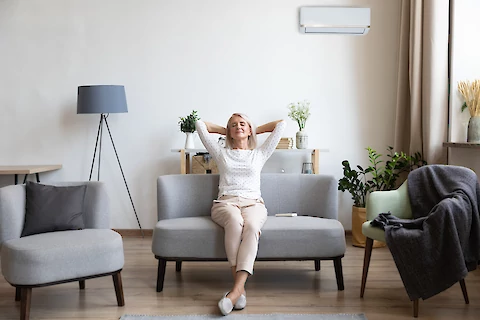
How to Make Your Home Accessible for Seniors
Whether you're a senior yourself or the child of one, it's important that your home be as accessible as possible. It's a frustrating experience for seniors to live in a home that's not accommodated to fit their needs—and it can even be unsafe.
Some people have some hesitation around accommodating their home for senior accessibility needs, mistakenly believing that it's very expensive to do. Some large accommodations might cost a lot of money, but there are many ways to make your home safer and more accessible for seniors without breaking the bank.
Get Pets (and Their Toys) Out of the Way
Many seniors and their relatives have a beloved family pet living in their homes. This can be a wonderful thing for many reasons. A pet's companionship has been shown to elevate mood and decrease mental health issues in seniors.
However, having a pet can also become a fall risk if not managed carefully. The AARP recommends keeping your furry friend in a separate, secure area to prevent it from running around the house and possibly causing the senior in your home to trip over it. Don't forget to also put away Mr. Whiskers' toys, as those can easily become a fall hazard as well.
Non-Slip Flooring
There are several areas in your home that can be made more accessible for seniors through a simple adjustment: adding non-slip flooring. However, it's not absolutely necessary to change out all the tiles in your bathroom to non-slip flooring. Instead, rubber non-slip floor strips are a great option to make your flooring safer for seniors without breaking the bank.
Make sure you're using these non-slip options in every area of your home that might become wet and slippery, like your entryway, bathroom, and kitchen. In outdoor areas, you can also scuff the floors so that they have a better grip.
Ensure Easy Access to Everyday Items
As we get older, it becomes more and more difficult to bend, crouch, or reach. Make sure that all of the items that the senior needs on an everyday basis are easily accessible—and at eye level if possible. For example, if spices and pantry items are kept on a low shelf, the senior will have to bend down to grab them. Think about using a Lazy Susan or countertop rack instead, so that these items become more accessible.
Change Your Lighting
It's common knowledge that our eyesight becomes worse as we get older. Make sure that seniors have all the light they need within the home. You can increase the amount of lamps in every room. (If you do this, be very cautious about getting any electric cords well out of the way.) If the windows are covered in heavy curtains, you might get some blinds or a lighter curtain that lets more natural sunlight in.
Another note about lighting: having to change light bulbs around the house is a task that seniors might start to find difficult. Consider replacing your light bulbs with LED lights, which save energy and need to be changed much less frequently.
Making your home more accessible for seniors doesn't need to cost a fortune. Start making small changes like these today to increase seniors' independence inside your home.
If you need some extra assistance and care for a senior in your life, give Senior Helpers a call today. We are Milford-Franklin's premier provider of in-home senior care, with service in Milford, Stoughton, Franklin, Walpole, Webster, and Foxboro. We are here for you so that you can breathe with relief, knowing the senior you love is safe.